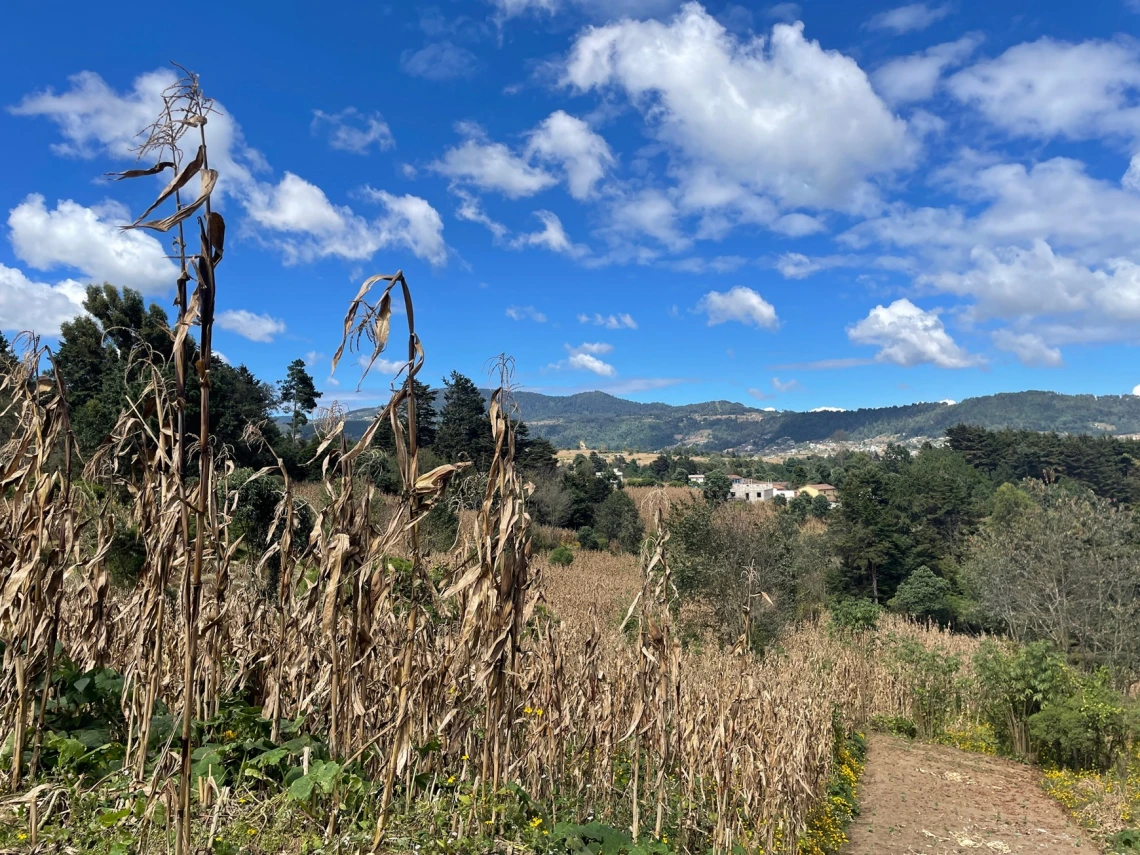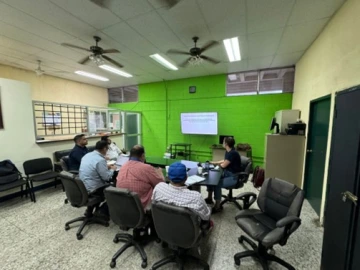Research and Collaborations Across Scales

Rainfed subsistence cornfields in Guatemala
Rainfall is variable. This becomes immediately clear after spending the summer monsoon months in Tucson, where one day a storm might be dumping rain on the University of Arizona campus but is completely absent just a couple of miles north near my house. My dissertation focused on this variability in rainfall across space and time – and all its complexities – a little further away from my current home in Arizona. Specifically, I studied how the rains are changing (or not) in Guatemala, a country where the timing, amount, and distribution of those rains are critical for the thousands of families who rely on them for subsistence farming.
As my analyses of rainfall spanned multiple temporal and spatial scales, so did my collaborations. While patterns in rainfall and these collaborations have and will continue to evolve, I found that developing both climate analyses and collaborative partnerships from the local to national levels led to a more nuanced understanding of rainfall variability and change and improved research outcomes. This was especially true for my project on seasonal climate forecasting in Guatemala. Seasonal forecasts have been promoted as important tools to assist farmers’ decision-making processes, providing information about the upcoming conditions at monthly to multi-monthly timescales to allow farmers more time for proactive planning. Despite their potential importance in a place like Guatemala, I found that little work had been done to evaluate how good these seasonal forecasts are, both in terms of their scientific, technical quality and their usability.
At the large scale – the big picture national level – the seasonal forecasts are produced by the National Institute of Seismology, Volcanology, Meteorology, and Hydrology (INSIVUMEH). Building relationships with the forecasting team at INSIVUMEH was essential to figure out how they are generated and how the process has changed over time. We found that overall the seasonal climate forecasts for rainfall are better than just a random guess or the average climate over time, which is often how the technical quality of forecasts are judged. At this level, the seasonal forecasts suggest that they might be of value to farmers who could use them.
Moving to the regional level, some important differences emerged. The skill of the forecasts varies within and between regions, indicating that these forecasts might be more useful in some places than others; a farmer where the forecast has been wrong for the last five years might lose all trust in that information compared to another where the forecasts have been consistently correct. The variable regional skill matters for the Local Technical Agroclimate Committees (LTACs). As the distributors of the seasonal climate information and associated agricultural recommendations, the LTACs are essential intermediaries between the national government and subsistence farmers. Just as the skill of the forecasts varies, so has the nature of my collaborations with the LTACs in the regions of Chiquimula and Totonicapán. I’ve found that I’ve had to be adaptable in terms of addressing the different needs and sharing this information in different ways as part of the distinct collaborations. For example, I almost always met with all of the members of the Chiquimula LTAC prior to moving forward with specific research decision whereas I primarily interfaced with one member of the LTAC in Totonicapán.

Meeting with the Chiquimula LTAC members
Perhaps most important, is what the seasonal forecast information means to some of the primary intended end-users: the subsistence farmers. Conversations with over 700 farmers and collaborations with local communities revealed that seasonal climate information is not being used at this highly local level, regardless of its technical quality. This in part is likely due to farmers not being familiar with the LTACs. However, we found that in Chiquimula, farmers who have observed decreases in rainfall (or even increases) are more likely to shift their agricultural maize practices than those who have not. Because farmers who have observed changes in rainfall in this region are shifting farming practices, this suggests that if climate information was accurate, reliable, and usable, that it might be of particular benefit in those places.
While there are still ways both the scientific quality and the societal value can be improved, it became clear to me that future bridges must be established across these scales to facilitate two-way communication of knowledge to maximize the benefits of seasonal forecasts and to ensure they are usable to those who could benefit from them most.

